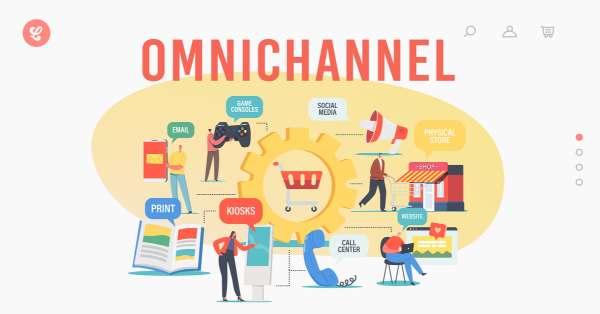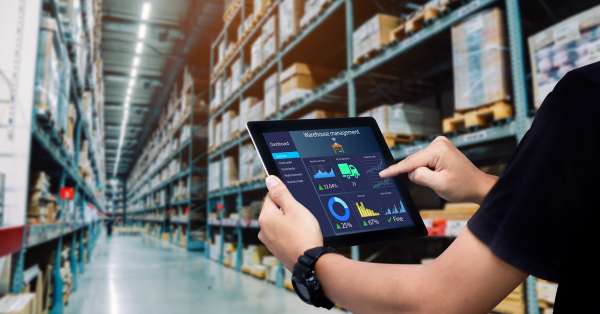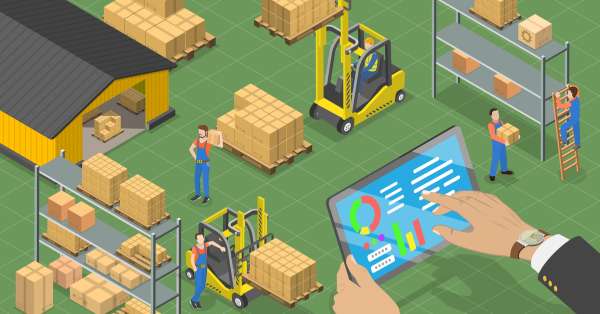
- Products
- Solutions
- Learn
- Partner
- Try Now
Successfully filling retail orders is much more than putting a few products in a box, slapping a label on it, and leaving it for a carrier to deliver.
Fulfilment really begins when you start the sales process and make marketing promises to customers.
You’ll be working with multiple partners and tools to get things moving long before any item is taken off a shelf.
Getting it right can be tricky, but it presents retail shops with many ways to save on cost, improve margins, and satisfy customers.
Here’s a look at what this means for a business like yours.
Define your sales channels

Putting a parcel in a customer’s hands or post box is the last step in retail fulfilment, and your planning should reflect that.
Start with how your customers come to find you and buy from you.
This comes in the form of three essential questions:
- What are the sales channels you will use for your retail business?
- Where do you want to sell next?
- What channels do you plan to avoid, at least in the near future?
These answers can help you define the fulfilment structure needed to meet customer demands.
For example, if you’re planning on supporting local sales, solutions like a micro-fulfilment centre (MFC) can make sense.
Brick-and-mortar retail needs consistent inventory shipments to each store location.
If you’re adding eCommerce on top of that, you’ll then have to consider if a specific store will also pack and ship your online orders.
Thankfully, most modern order management tools can support inventory and orders across multiple locations.
Sales channels define where you need a physical or digital presence and how inventory is used. Figuring those out first creates guidelines for implementation and technology.
Limit carriers and delivery options

Now that you’re thinking about how and where to sell, take the next step.
Add in how you’ll get orders from these shoppers. There may be local delivery services in major markets, with retailers adding service through programs that once just delivered takeaway.
Suppose your audience spans the country or reaches significantly into neighbouring countries.
In that case, you’ll want to reach out to logistics companies like 3PLs to learn about ways to automate the process and get partners that can help with customs, VAT, and other cross-border challenges.
The trick here is determining what offers a service your customers will appreciate without hurting your business or budget.
Look at available carriers and the services they offer. Speak to representatives about what guarantees they can make for capacity and service levels.
You don’t want to hit the year-end holiday sales rush and discover that your carrier isn’t prioritising your parcels or saving space for your shipments.
Make agreements with multiple carriers.
You may use some for different orders. DHL, for example, might be the most affordable for a two-day service, while the traditional post is the most affordable for the bulk of your orders.
While we hear that everyone will take to the streets with torches and pitchforks if they don’t get two-day or next-day delivery, data shows that many are willing to wait and give you more time to fill their orders.
However, due to the changing demand and customer behaviour, having your own delivery management system can save you tons of money, and time and make your customers happy and satisfied.
You can know more about it here.
Let Demand Guide You

Balance your selection of carriers and their services with your budgetary needs by aligning options to customers and budgets. Here are a few thoughts:
- Time sensitivity: Offer customers expedited options. If most of your customers pick these, consider using a standard shipping cost on all orders to cover this. Tell people exactly what the shipping cost gets them and why it is in place.
- Cost sensitivity: If your shoppers abandon carts because of shipping costs, look for flat-rate shipping options that may take a little longer. Give this time estimate early on in the checkout process to avoid cart abandonment. Negotiate with carriers to see how much they’ll reduce standard rates based on the volume of business you bring. (3PLs help most in situations like this because they can leverage the order volumes for all clients when negotiating lower rates)
- Same-day or faster demands: The COVID shift in eCommerce has made many people demand rapid delivery. If that is your customers and they’re willing to pay enough that your margins are secure, look at MFCs and local partners. You might be able to offload the work (such as having services come in and literally shop your store) or partner with a large distributor to address major metros.
Sales channels tell you where you’ll find customers.
Customer demands help you determine what kind of carrier services and delivery speeds you need to achieve.
Then these concerns offer guidelines for the technology and tools to implement to make those achievements feasible.
Identify tools that simplify the fulfilment process

There are more eCommerce and retail fulfilment tools available than any business will ever need.
If you don’t walk in with specific goals and needs, the scope of your investments will creep and creep until you’ve reached too far and had a mess that can’t be used.
Avoid wasting all that money and effort by tying tool selection to specific areas of operations.
If you’re new to thinking about retail fulfilment, prioritize options that simplify the work your teams do and offer clear demonstrations of how they increase your efficiency.
Order management

Your first process to manage and monitor is the inbound delivery of freight and how these goods are used to fill orders.
Order management and inventory management tools usually have features and modules to support initial activities.
Look for solutions that track your inventory through barcode scanning and recurring counts.
Inventory must be accurate for you to fill orders and sell accurately, otherwise, you can lose sales and trust with stockouts and delays. If you’re selling across multiple channels, ensure that your order and inventory tools support this.
That may mean bringing every order into a single system — i.e., Facebook and Instagram sales live alongside website orders and all are treated the same.
If your retail fulfilment includes multiple physical locations (stores, warehouses, MFCs), then you’ll want that specific support.
Your tools should be advanced enough to look at inventory across locations and send an order to the nearest facility that has every item in an order. This controls last-mile expenses while shortening fulfilment time.
Shop around for the features that you need. Some options may help you track the boxes, tape, and infill you need.
Others might have freight options that integrate with your supplier’s software, making it easier to restock and track these shipments.
In the warehouse
When your sales get going, retail fulfilment is a numbers game. You need orders to be filled accurately and quickly, without damaging products either in the warehouse or in transit.
You also need inventory tools to track product counts and send updated info to your sales and inbound tools.
Look for a warehouse management system (WMS) that targets these areas of efficiency. Order accuracy can be improved when it requires pickers to scan each item for the order they’re picking.
Tools that tell your team exactly where to put each SKU in your inventory make it much easier to find the right shelf and product when picking an order.
Efficiency improvements happen when tools make slotting decisions based on order volumes or tell the picker the best order to go and get SKUs (reducing the distance they walk and eliminating things like backtracking).
Squeeze every ounce of efficiency and speed you can out of these processes so that you’re able to scale when demand increases.
Rely on the tools to help make decisions here, while being realistic about workers being human and needing breaks, water, access to the bathroom, and a moment to ask managers a question.
A robust WMS is a must-have because all warehouse activities get incredibly complex at scale. Every success increases your margins for that sale, while every failure will hurt margins and may cost you a long-term customer.
Carriers and labels
A computer or printer at each packing station is the last bit of good tech to help you have a successful retail fulfilment operation.
Your WMS or order management tools should integrate with carrier tools — a now-standard feature in the industry.
Use those connections and built-in automation to have the management tool pick the right carrier and shipping product (two-day, next-business-day, standard post, etc.) for every order.
You’ll program this functionality by selecting rules for preferences on speed, cost, and other factors.
Then, it selects the most appropriate option after the order is boxed and measured. It can save you significantly by ensuring comparisons between carriers are accurate.
You don’t have to pressure team members to make these decisions for hundreds of orders each day, and it keeps packing stations moving quickly.
It’ll also give you a chance to focus on improving how you pack goods by considering aspects like DIM weight.
Test parcels, partners, and more
All of the decisions and options mentioned above can feel simple in the abstract. These differences aren’t truly felt until the process is in place and things either go exceptionally well or all fall to pieces. Successful retail fulfilment isn’t static.
You’ll be updating software and practices regularly. As you reach new business milestones, you can renegotiate rates with carriers.
New sales channels often mean updating tools and activities. Each new store you open adds another potential bottleneck or distribution point.
Look for partners that are willing to help you test solutions. A WMS or order tool should have a trial period or the ability to segment orders to test how it performs.
Adding an MFC for a major metro area is a way to see if that’s needed or if the cost is too high.
Treat fulfilment like you would a new product launch.
Research all the involved steps and requirements, figure out test markets and plan your rollout with as much detail as possible.
There’s always a new way to improve and grow, and testing helps you stay on that path.
How can Tookan Help?
If you are looking to manage all your delivery operations from one platform to enhance efficiency and deliver an exceptional customer experience with world-class last mile delivery, one of the best places to visit will be Tookan. With powerful delivery management software, Tookan allows you to deliver faster to your customers.
Subscribe to stay ahead with the latest updates and entrepreneurial insights!

Subscribe to our newsletter
Get access to the latest industry & product insights.





















